The BEST, perfectly fried and crispy sabudana vada ever! These sabudana vada are crispy from outside while soft from inside. Plus they are very easy to prepare. Here you will learn all the tips and tricks to frying and perfecting them.
I have also shared the non-fried sabudana vada below in the video and step-by-step photos.
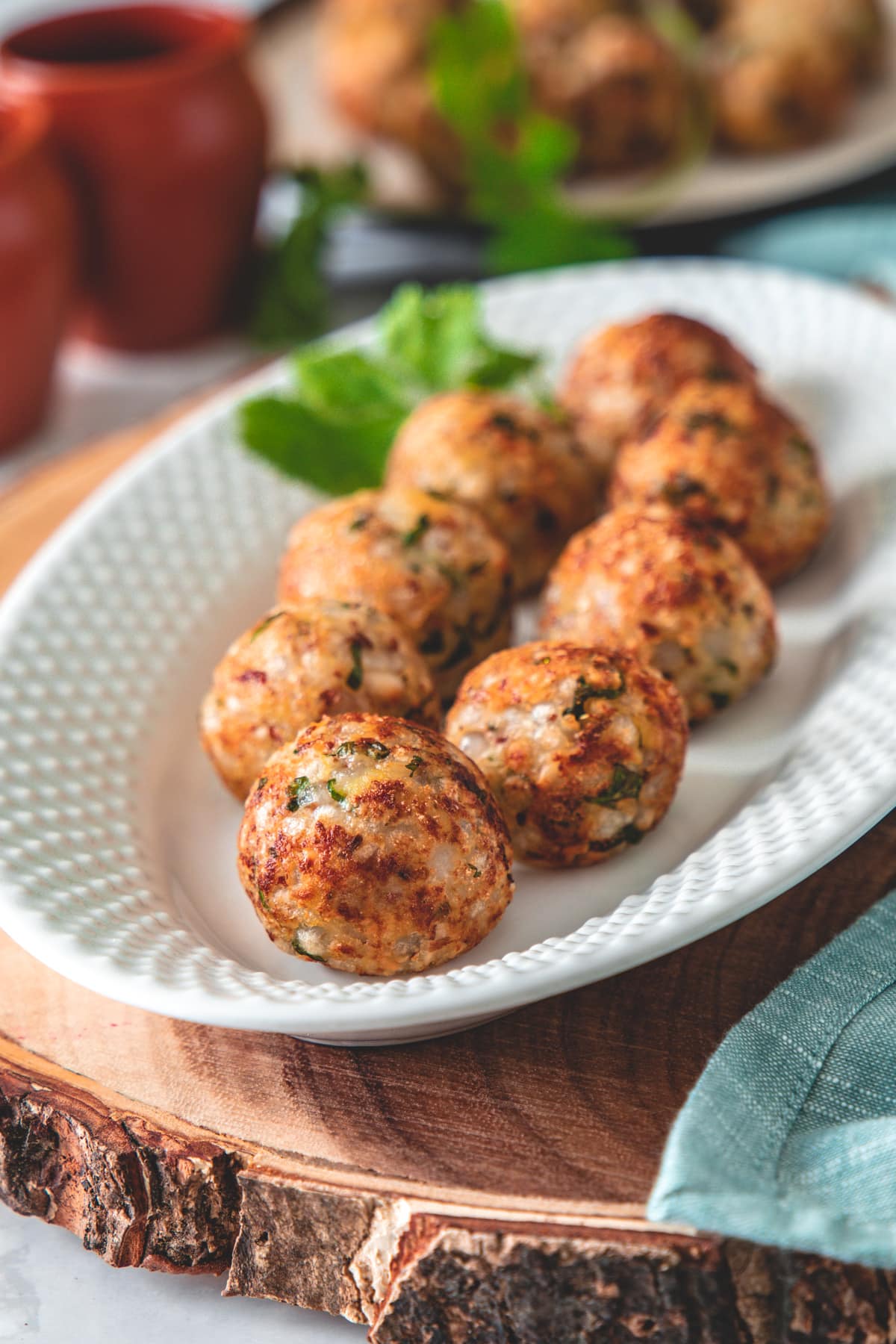
Jump to:
❤️ You'll Love This Sabudana Vada Recipe
This can be eaten during Hindu fasting like Navratri vrat, Ekadasi, Maha Shivratri or Janmashtami.
In Mumbai, you will find it at street stalls selling these vada. Yes, it is true, it is street food in Bombay (Mumbai). And this recipe tastes the same as those street stalls.
Fried (Authentic) Version:
- This recipe will give you the perfect, crispy, authentic Maharashtrian style sabudana vada.
- These are crispy from the outside and soft from inside.
- The texture of these vadas is amazing, as you bite into you’ll feel crispiness and then they start to melt-in-your-mouth.
- But keep in mind that as it cools it loses its crispness.
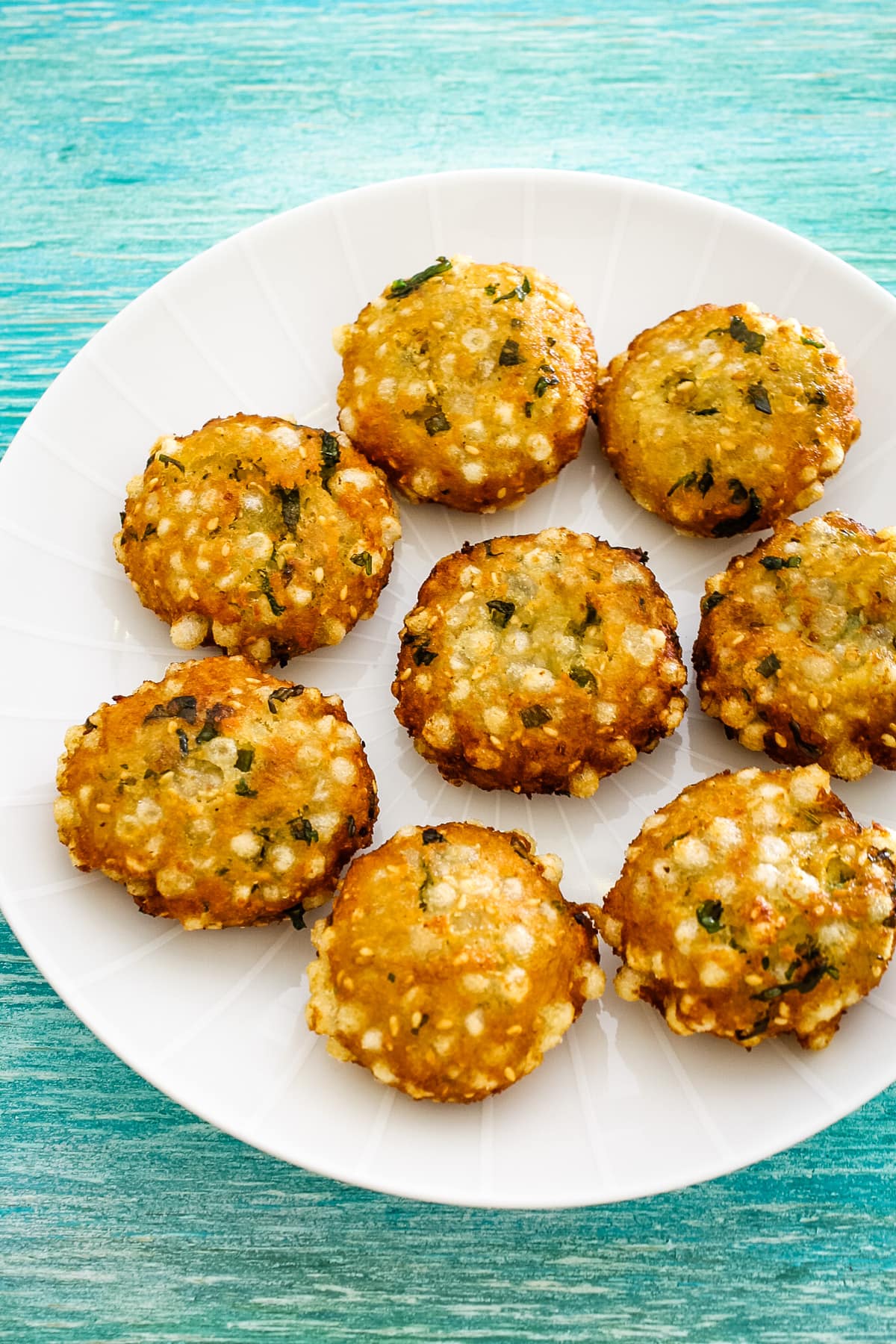
Non-Fried Version:
- The non-fried sabudana vada is made into paniyaram pan (aebleskiver pan).
- Each vada requires only 1 to 1.5 teaspoons of oil.
- The crispy texture depends on the amount of oil you use. The above-given amount of oil gives medium-crisp texture outside with soft and melt-in-your-mouth inside.
🧾 Ingredient Notes
Here is the pic of the ingredients used in making sabudana vada (plus oil for deep frying, not shown in the pic). The list is simple yet it gives the best-tasting vada.
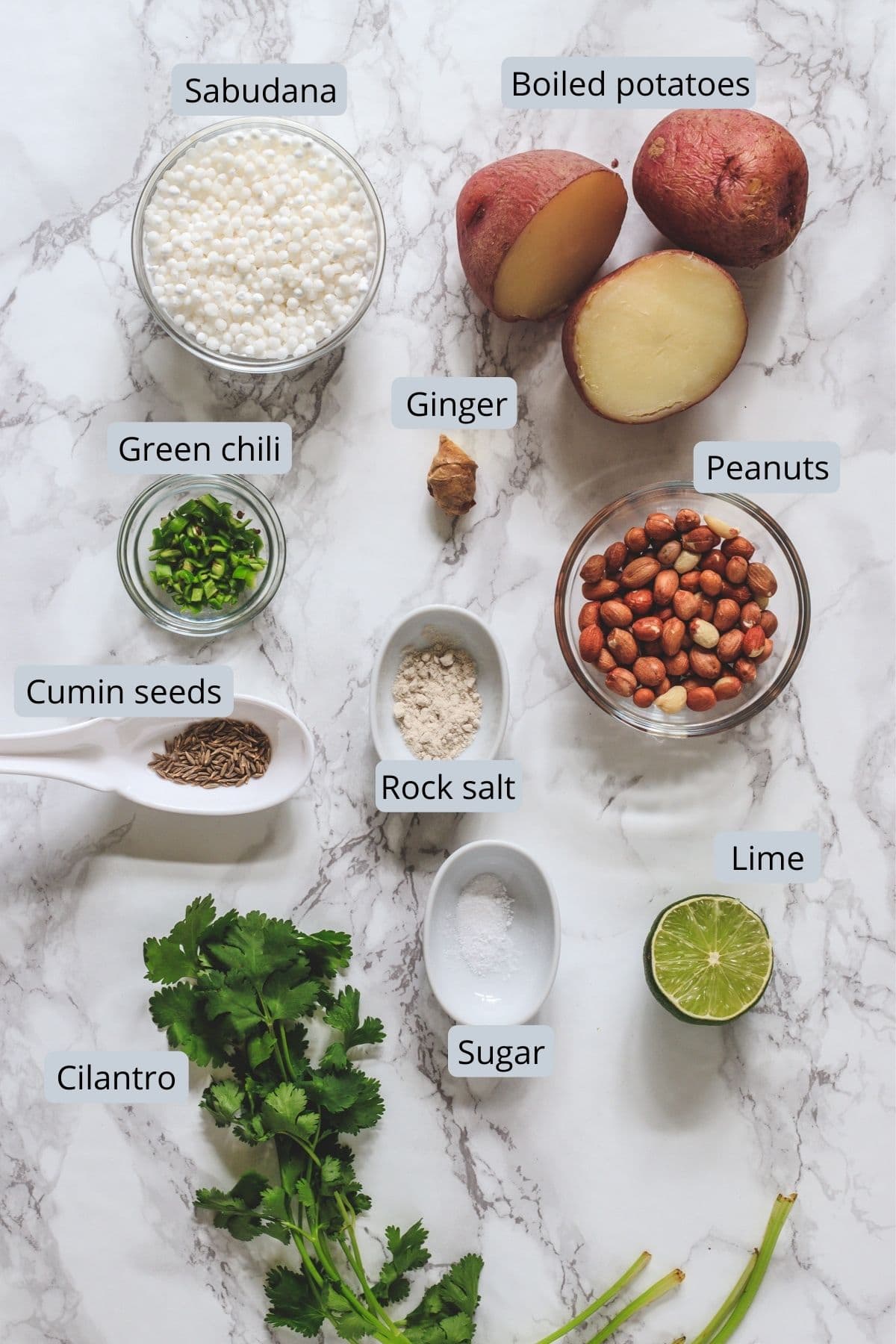
- Sabudana: These are known as tapioca pearls in English. This is purely made of starch and full of carbohydrates. This is allowed during Hindu fasting (vrat) and keeps you full for longer and gives instant energy.
- Potato: Boiled potatoes are mashed and used here. It acts as a binding agent here. I would highly recommend using red potatoes or Yukon gold potatoes for Indian cooking.
- Peanuts: adds some nutritions and crunch to the sabudana vada.
- Ginger: Many does eat ginger during vrat or many do not. Please follow your family tradition and add accordingly.
- Green chili: This is the only ingredient that adds heat and spicy taste. So adjust accordingly.
- Rock salt (Sendha namak): Since these are made during vrat, sendha namak is used. If making on regular days, you can use regular salt.
👩🍳 How To Make Sabudana Vada? (Stepwise)
Preparation:
1) Take sabudana in a colander and wash under running cold water till water runs clear. Make sure to get rid of all the starch otherwise, the vada mixture will become sticky.
- Then soak in the water for 3-4 hours or overnight (depending on the type of your sabudana). The one we get here in the USA always requires overnight soaking.
2) After the soaking time, they swell up almost all the water and they become double in size.
3) Transfer them into the colander, rest for 15-20 minutes and let the excess water drain out. You must get rid of most of the moisture otherwise, the vada mixture will become loose and sticky.
4) when you press between your fingers it should mash easily. That’s how you know that your sabudana is soaked perfectly.
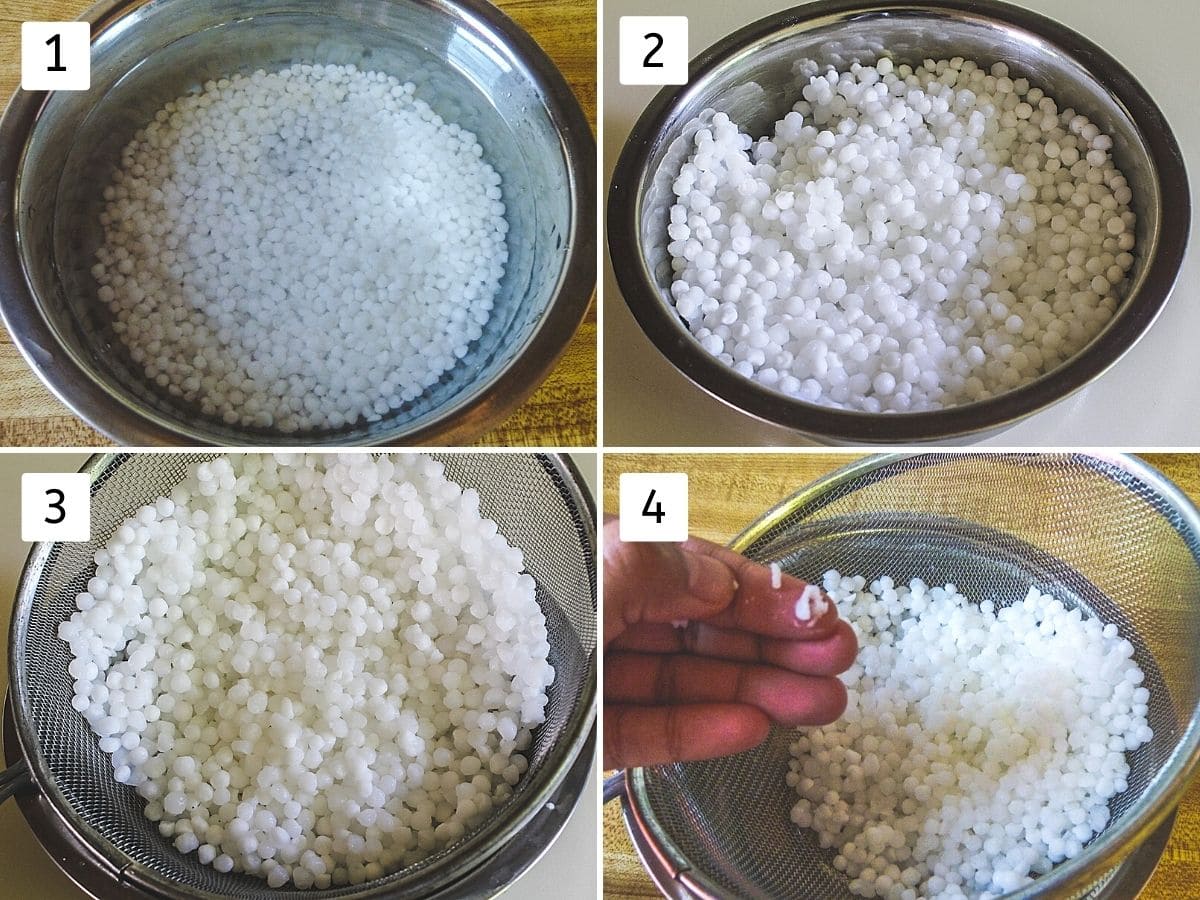
5) While sabudana is draining, dry roast peanuts in a pan on medium-low heat until they get light brown.
6) Let them cool down and then coarsely crush them. I always use mortar and pestle because I like the big chunks of peanuts in my vada. You can use a food processor or grinder. But those can sometimes make into the powder form.
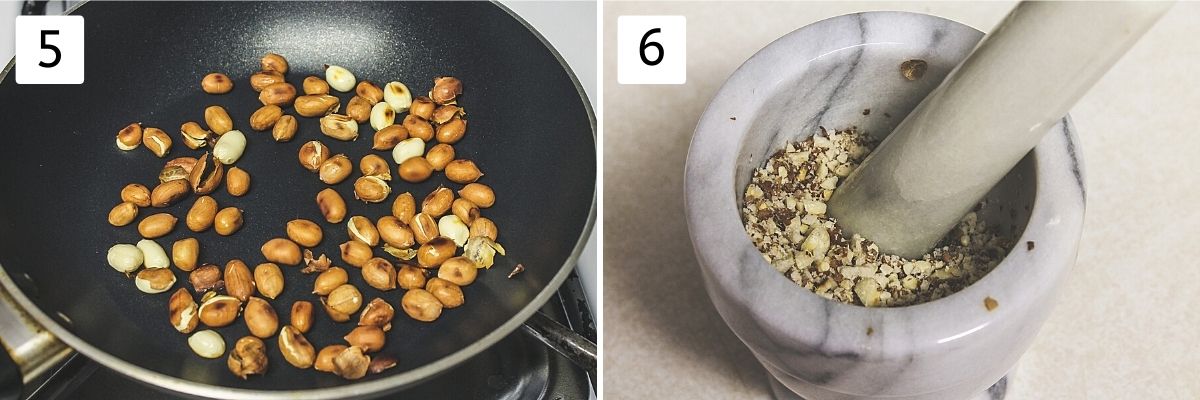
Making Sabudana Vada:
1) Take all the ingredients in a bowl.
2) Mix them well and make a dough-like ball. This dough mixture should be stiff so you can form the vada easily. It should not be loose or sticky. If it is loose then you can add a couple of tablespoons of rajgira atta or singhare ka atta.
3) Now heat the oil in a pan on medium heat for deep frying. Meanwhile, grease your palms with little oil. And make round and flat vadas like tikki or patty and keep aside.
4) Oil should be hot enough (more hot than usual all frying).
How to check the oil is hot enough or not? Drop a small portion of vada mixture into the oil and if it comes on top of steadily then it is ready for frying. If it sits at the bottom for longer then it is not hot enough.
Slide vadas gently into the hot oil. Do not disturb them for a minute otherwise, they will break in the oil. After a minute or so you can flip it. Fry 3-4 vadas at a time. Do not overcrowd vadas.
5) Deep fry on both sides until golden brown and crispy.
6) Remove it using a slotted spatula and keep on a paper-towel-lined plate. Repeat the frying for the rest of the vadas.
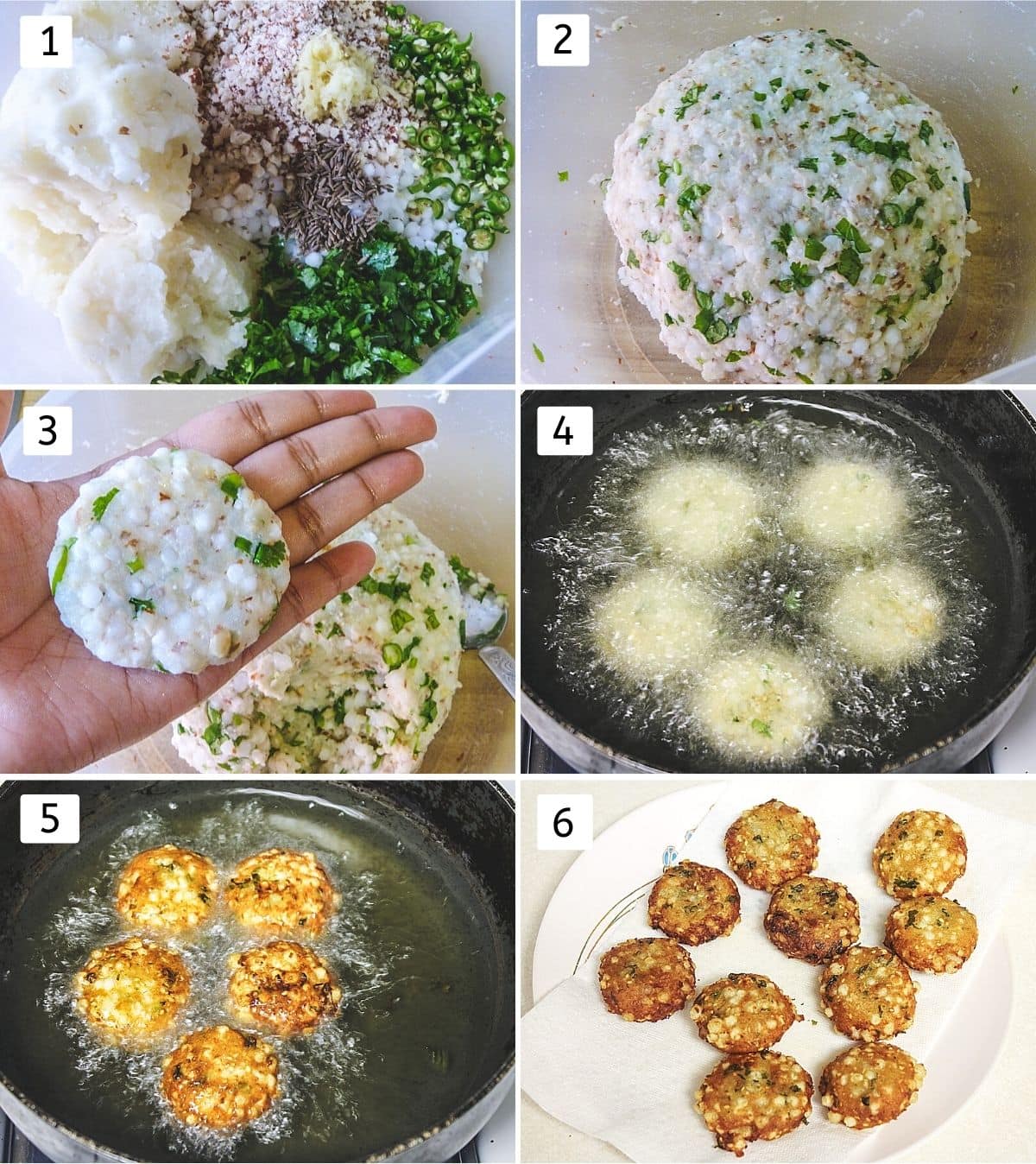
Non-Fried Sabudana Vada:
1) Make the vada mixture as above. Grease your palm with oil and start shaping into balls. The size of the ball should be a little smaller than the indentation of your paniyaram pan. So it can fit inside easily.
2) Heat the pan on medium heat. Add 1 teaspoon of oil in each section.
3) Once the oil is hot, gently place the vada in it. Let it cook until it becomes golden brown and crisp from the bottom.
4) Then flip them using a fork or wooden skewer. Drizzle more ½ teaspoon of oil and continue cooking until another side is also golden brown. If needed you can flip to other sides and cook if they are less golden compared to the top and bottom sides.
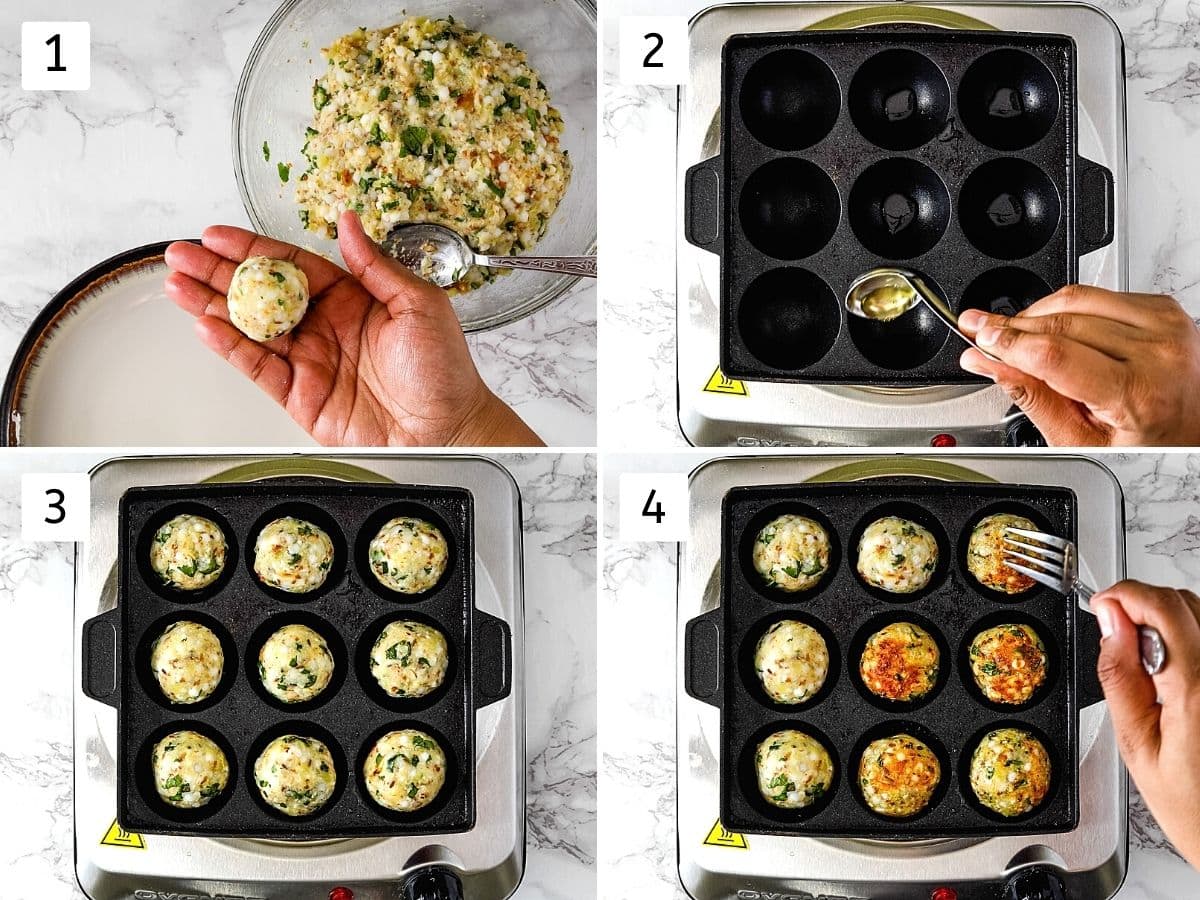
💭 Expert Tips For Perfect Sabudana Vada
I have mentioned all the possible tips in the instruction itself, But here I am summarizing the important points to keep in mind.
- Wash the sabudana to remove starch. For this step use a colander and get rid of all the starch by rubbing the pearls while washing. I would avoid the rinsing method.
- Sabudana must be soaked well. When you press between your finger and thumb, it should mash easily. If it is not soaked properly then it will stay hard, chewy even after frying the vadas. And you will feel it while biting meaning raw tapioca pearls will stick to your teeth.
- The amount of water to soak sabudana: Always follow 1:1 ratio for sabudana:water. Or use another method - add just enough water that sabudana are submerged into the water (About ½ - 1 inch above the pearls).
- The moisture content: Sabudana should be drained very well. There should not be any moisture in it. If water is present in the sabudana then the vada mixture will become sticky and you’ll be unable to shape vada. So let it drain for good 15-20 minutes.
- By any chance or mistake, if the mixture becomes soft and sticky. You can mix a couple of tablespoons flour (any vrat atta - rajgira~amaranth, singhara~water chestnut or kuttu~buckwheat flour). This flour will absorb the extra moisture. If making on regular days, then you can add rice flour.
- While shaping sabudana vada, grease your palm with little oil. So vadas won’t stick to your palm. Shape 5-6 vadas and it will start to stick. So wash your hands or wipe it dry with a kitchen towel, grease again then and shape vadas.
- The oil has to hot enough for frying. If fried on super hot oil then they get brown quickly from the outside and stay raw from inside. If fried in less hot oil then vada will soak up too much oil.
🍽 What To Serve With Sabudana Vada?
- Serve sabudana vada warm (or hot) to enjoy it’s texture at best. If served later then it lose it’s crispness.
- It tastes best with the side of dipping chutney (sauce) - phalahari chutney (this chutney can be consumed during vrat or upvas.)
- On regular days, I would like to dip them in yogurt and sometimes with ketchup and mint chutney.
- During the rainy days, you can enjoy them with a cup of hot tea or coffee.
FAQs
- More moisture in the vada mixture, it has more chances to break while frying. You have used soggy boiled potatoes or you have not drained the sabudana well.
- The oil temperature is not right. If the oil is not hot enough then vada will absorb more oil and can break in the oil. So oil has to be moderately hot (on medium heat).
- You are moving, disturbing the vada too quickly. Once you add the sabudana vada into the hot oil, do not disturb them for a minute. During this time, the outside layer gets fried and gets enough bind. Then you can flip and move around without fear of breaking. If you have touched them earlier or too soon then it will break in the oil while frying and it becomes a big mess.
I have seen many making air fryer sabudana vada around the web and social media. So I got excited and tried. But sorry to say I do not like the texture. The sabudana becomes chewy instead of crisp texture. So I do not recommend making sabudana vada in air fryer.
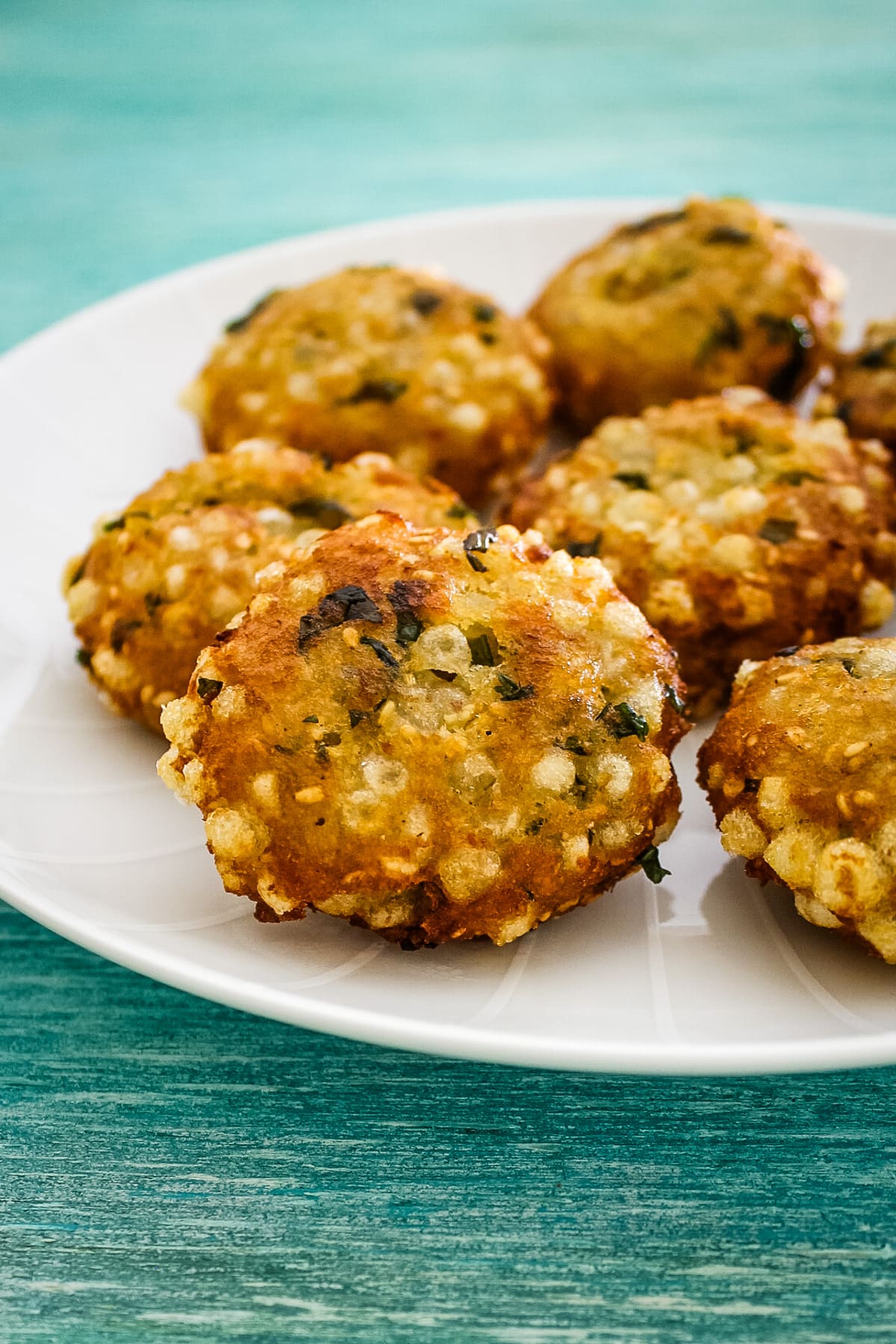
PS Tried this sabudana vada recipe? Please leave a star rating in the recipe card below and/or a review in the comment section. I always appreciate your feedback! Plus, Subscribe to my newsletter and follow along on Pinterest, Instagram, and Facebook for all the latest updates.
Recipe Card
Sabudana Vada Recipe
Ingredients
- ¾ cup Sabudana (Sago or Tapioca pearls)
- ¾ cup Water for soaking
- 2 medium or 1 ½ cups Potatoes boiled, peeled and mashed
- ½ cup Peanuts roasted & crushed
- 1 teaspoon Cumin seeds
- 1 ½ teaspoon Ginger paste or freshly grated or crushed
- 5-6 Green chilies chopped finely
- 3 tablespoons Cilantro or coriander leaves chopped finely
- 2 teaspoons Lemon juice
- 1 teaspoon Sugar
- Rock salt (sendha namak) to taste
- Oil for deep frying
Instructions
Soaking Sabudana & Other Prep:
- Take sabudana in a colander and wash under running cold water till water runs clear. Make sure to get rid of all the starch otherwise, vada mixture will become sticky.
- Then soak in the water for 3-4 hours or overnight (depending on the type of your sabudana). The one we get here in the USA always requires overnight soaking. After the soaking time, they swell up almost all the water and they become double in size.
- Transfer them into the colander, rest for 15-20 minutes and let the excess water drain out. You must get rid of most of the moisture otherwise, the vada mixture will become loose and sticky.
- when you press between your fingers it should mash easily. That’s how you know that your sabudana is soaked perfectly.
- While sabudana is draining, dry roast peanuts in a pan on medium-low heat until they get light brown.
- Let them cool down and then coarsely crush them using mortar and pestle.
Making Sabudana Vada:
- Take all the ingredients (soaked sabudana, mashed potatoes, crushed peanuts, ginger paste, green chili, cumin seeds, rock salt, sugar, lime juice, cilantro) in a bowl.
- Mix them well and make a dough-like ball. This dough mixture should be stiff so you can form the vada easily. It should not be loose or sticky. If it is loose then you can add a couple of tablespoons of rajgira atta or singhare ka atta.
- Now heat the oil in a pan on medium heat for deep frying. Meanwhile, grease your palms with little oil. And make round and flat vadas like tikki or patty and keep aside.
- Oil should be hot enough (more hot than usual all frying). How to check the oil is hot enough or not? Drop a small portion of vada mixture into the oil and if it comes on top of steadily then the oil is ready for frying. If it sits at the bottom for longer then the oil is not hot enough.
- Slide vadas gently into the hot oil. Do not disturb them for a minute otherwise, they will break in the oil. After a minute or so you can flip it. Fry 3-4 vadas at a time. Do not overcrowd vadas.
- Deep fry on both sides until golden brown and crispy. Remove it using a slotted spatula and keep on a paper-towel lined plate. Repeat the frying for the rest of the vadas.
Notes
- Wash the sabudana to remove starch. For this step use a colander and get rid of all the starch by rubbing the pearls while washing. I would avoid the rinsing method.
- Sabudana must be soaked well. When you press between your finger and thumb, it should mash easily. If it is not soaked properly then it will stay hard, chewy even after frying the vadas. And you will feel it while biting meaning raw tapioca pearls will stick to your teeth.
- The amount of water to soak sabudana: Always follow 1:1 ratio for sabudana:water. Or use another method - add just enough water that sabudana are submerged into the water (About ½ - 1 inch above the pearls).
- The moisture content: Sabudana should be drained very well. There should not be any moisture in it. If water is present in the sabudana then the vada mixture will become sticky and you’ll be unable to shape vada. So let it drain for good 15-20 minutes.
- By any chance or mistake, if the mixture becomes soft and sticky. You can mix a couple of tablespoons flour (any vrat atta - rajgira~amaranth, singhara~water chestnut or kuttu~buckwheat flour). This flour will absorb the extra moisture. If making on regular days, then you can add rice flour.
- While shaping sabudana vada, grease your palm with little oil. So vadas won’t stick to your palm. Shape 5-6 vadas and it will start to stick. So wash your hands or wipe it dry with a kitchen towel, grease again then and shape vadas.
- The oil has to hot enough for frying. If fried on super hot oil then they get brown quickly from the outside and stay raw from inside. If fried in less hot oil then vada will soak up too much oil.

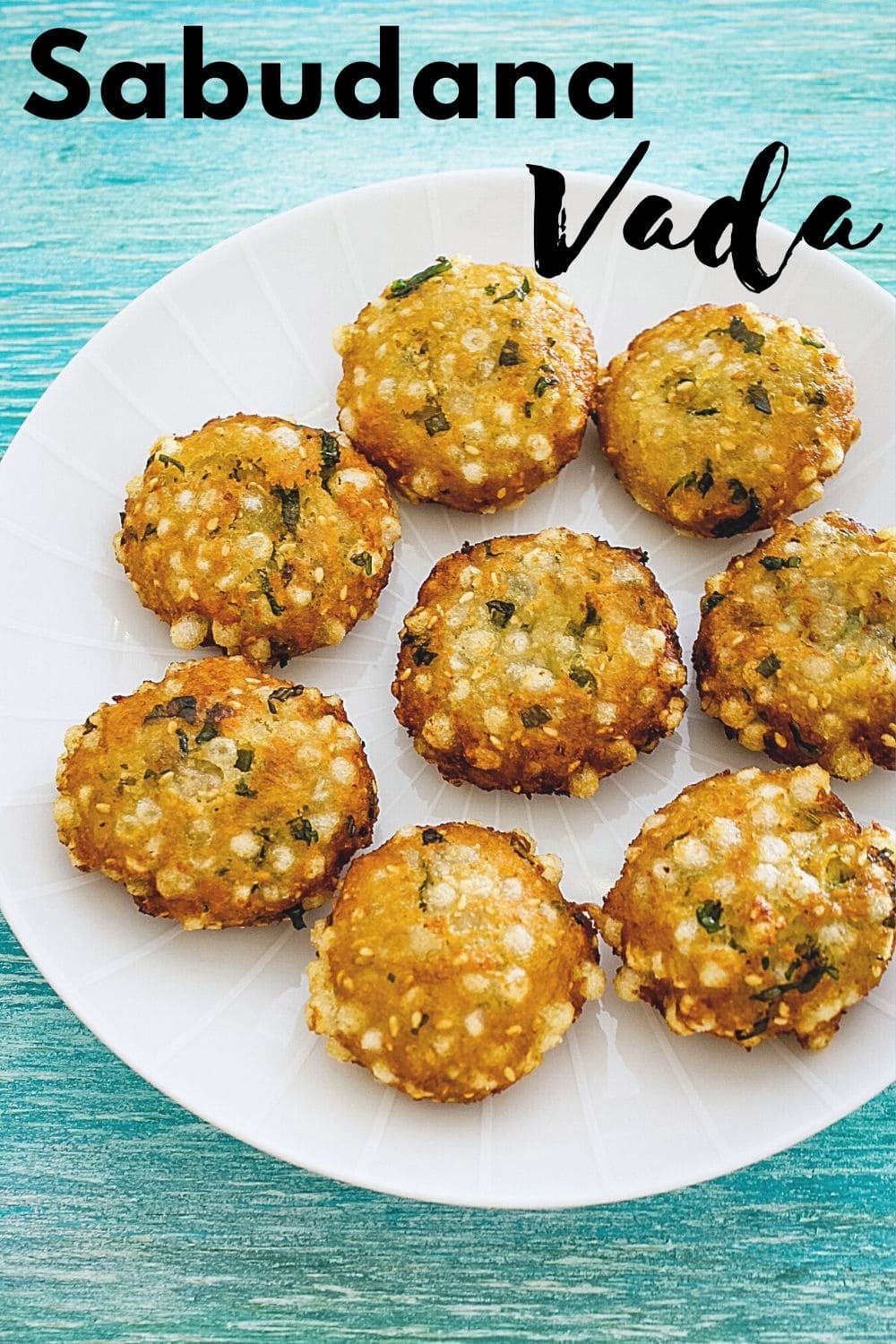
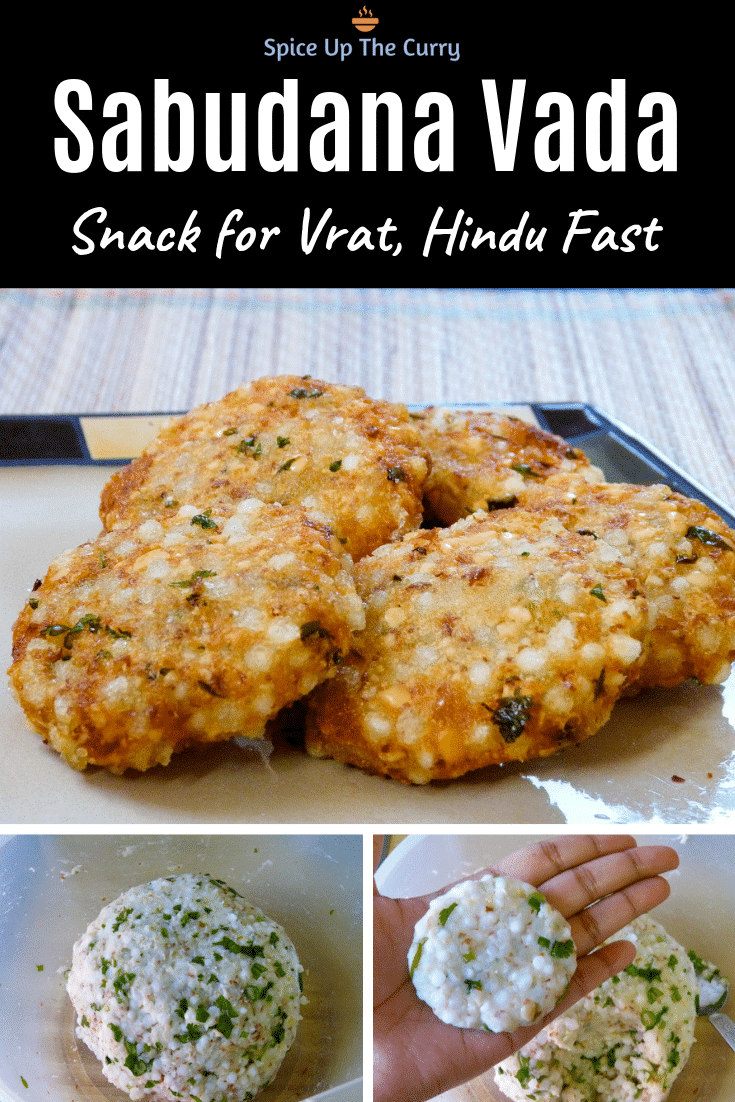
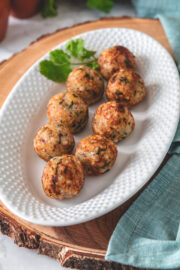
Nupur
Hi Kanan, after soaking and draining the sabudana, would you advise to keep it outside or in the refrigerator if one has no option but to make vadas the next day?
Kanan Patel
Drain and keep in the refrigerator, if using next day.
Nupur
Thank you!